The day after we arrived back in La Paz, we caught an early morning bus to the lakeside town of Copacabana, mere minutes from the Peru border. Within an hour or so, we had our first glimpses of Lake Titicaca, the world’s largest high altitude lake. Nestled between rolling hills with the backdrop of the Andes mountains, Lake Titicaca is nothing short of breathtaking. Because of the lake’s immense size, we had to cross a small part of the lake by boat to get from La Paz to Copa. While passengers were taken across on small motorboats, the bus with all of our luggage was taken across on a large, flat boat, acting as a ferry. We beat the bus by nearly 20 minutes, and as I watched the bus make its way over precariously, I had serious concern that my bag was going to be the next lost item at the bottom of Lake Titicaca. Our bus, along with our bags, eventually made it over, and we continued our journey onwards to Copa. We arrived in the early afternoon, and after reading about the town in Lonely Planet as “enchanting”, I was shocked by the worn down houses, and immense road construction.
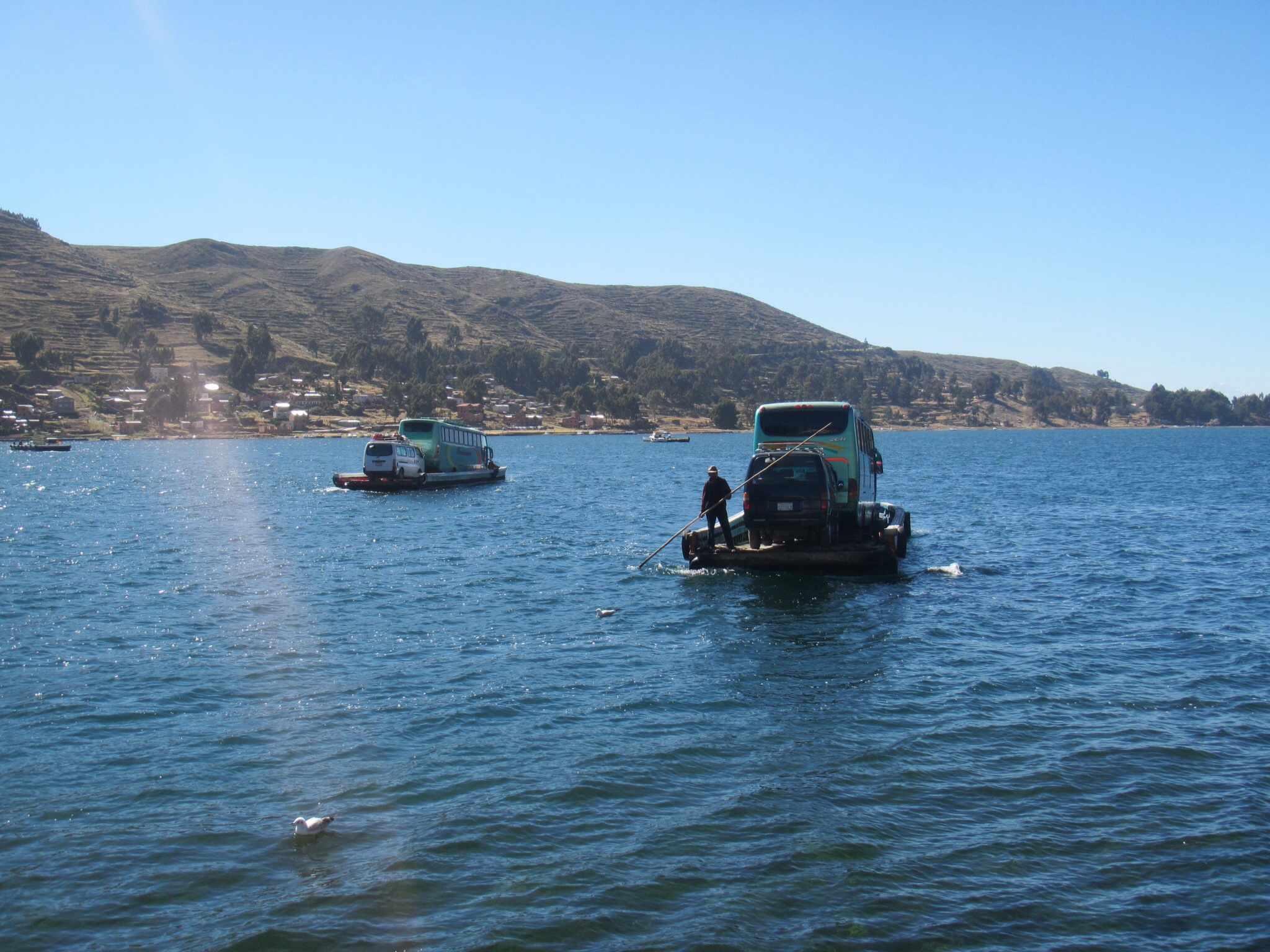 After checking into our hostel, we set off in search of some food, before wandering 5 minutes further down to the lake, where I continued to enjoy the beautiful view before us. We spent the rest of the afternoon exploring the tiny town, taking in the main square, the beautiful domed cathedral, and visiting one of the coffee shops, before calling it a night. The following morning, we were up early to catch the first boat over to Isla del Sol (the Sun Island). Unfortunately, we ended up on the slowest possible boat and the trip was a painful 2 hour journey. We got off the boat at the north island, and set off to hike across the island. Isla del Sol is important in religious Incan history, as it is said to be the place where the mythology of the sun was developed. It is rumored that the bearded white God, Viracocha, along with some of the first Incas made a presence on this island long ago. Although I’m not sold on this story, Isla del Sol was certainly a beautiful place for a day hike. We made our way up the north side of the island, which was no easy task at 4,000m above sea level, to visit the Chincana ruins. From there, we walked south on the island, making our way up and over the rolling hills over the island, passing several small villages. The total population of the island is approximately 2,500 people, although I’m certain we saw more donkey’s than people. After nearly 4 hours of hiking at high altitude, we were both beat, and were relieved when we made our final descent into the village of Yumani. Here, we found a restaurant overlooking the lake, where we enjoyed a lunch of lake trout, before catching the boat back to Copacabana.
After checking into our hostel, we set off in search of some food, before wandering 5 minutes further down to the lake, where I continued to enjoy the beautiful view before us. We spent the rest of the afternoon exploring the tiny town, taking in the main square, the beautiful domed cathedral, and visiting one of the coffee shops, before calling it a night. The following morning, we were up early to catch the first boat over to Isla del Sol (the Sun Island). Unfortunately, we ended up on the slowest possible boat and the trip was a painful 2 hour journey. We got off the boat at the north island, and set off to hike across the island. Isla del Sol is important in religious Incan history, as it is said to be the place where the mythology of the sun was developed. It is rumored that the bearded white God, Viracocha, along with some of the first Incas made a presence on this island long ago. Although I’m not sold on this story, Isla del Sol was certainly a beautiful place for a day hike. We made our way up the north side of the island, which was no easy task at 4,000m above sea level, to visit the Chincana ruins. From there, we walked south on the island, making our way up and over the rolling hills over the island, passing several small villages. The total population of the island is approximately 2,500 people, although I’m certain we saw more donkey’s than people. After nearly 4 hours of hiking at high altitude, we were both beat, and were relieved when we made our final descent into the village of Yumani. Here, we found a restaurant overlooking the lake, where we enjoyed a lunch of lake trout, before catching the boat back to Copacabana.
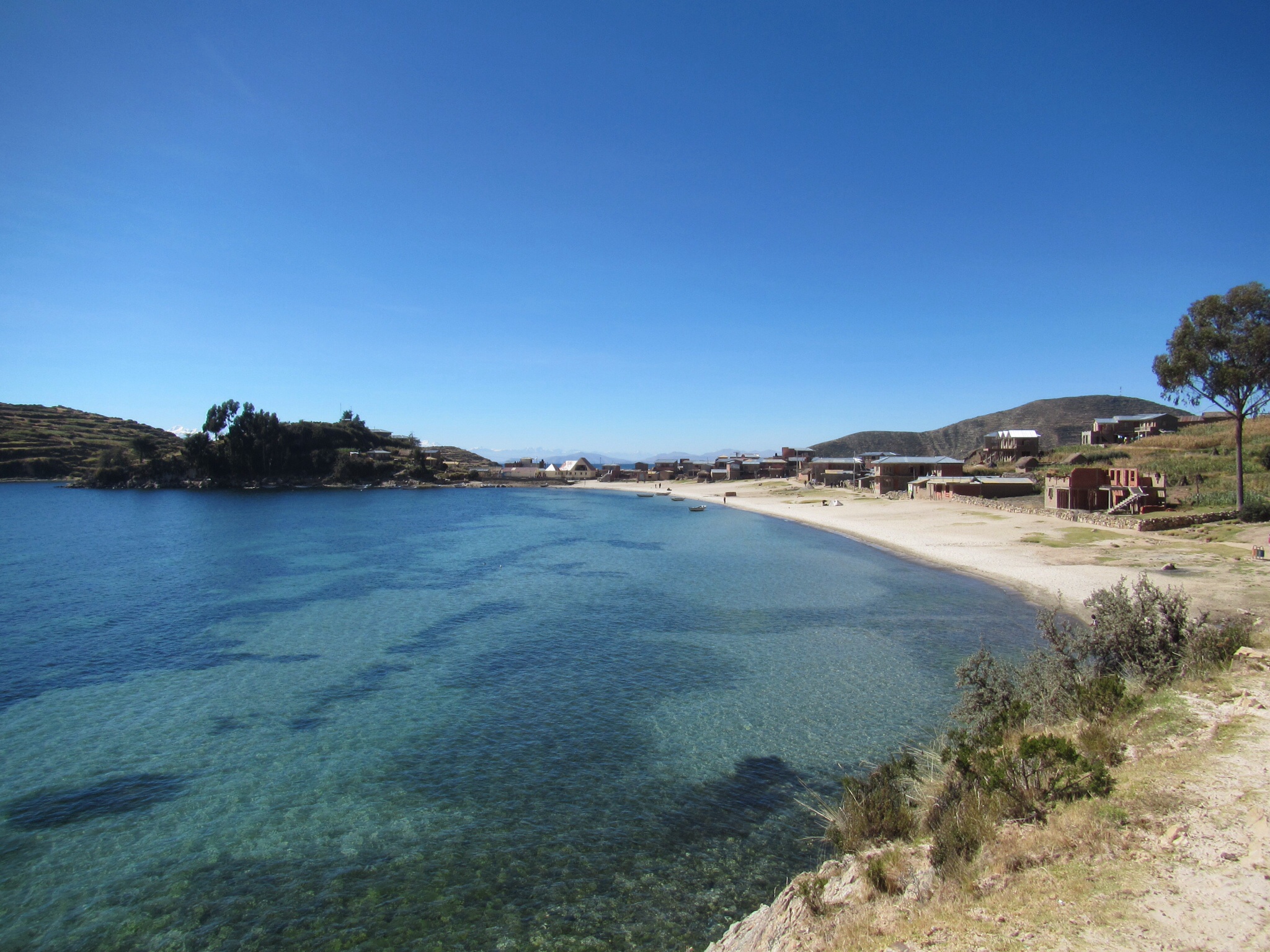 Unfortunately, we ended up on the same slow boat going back to Copa, and it took us an hour and a half to get back at turtle speed. I was exhausted so I spent most of the trip sleeping; nothing like a good afternoon nap! We arrived back to Copa around 5pm, and headed back to our hostel to organize our stuff before catching the 6:30pm bus to Puno in Peru. Within 20 minutes of being on the bus, we had arrived at the Peru border. We were dropped off at the Bolivian exit immigration, and then proceeded to walk 300m into Peru, where we got our entry stamp. No body questioned us, and it was by far the easiest border crossing we’ve had to date. Although I have enjoyed Bolivia, I was excited to get to Peru, where perhaps there is a bit more order and a little less deception than in Bolivia.
Unfortunately, we ended up on the same slow boat going back to Copa, and it took us an hour and a half to get back at turtle speed. I was exhausted so I spent most of the trip sleeping; nothing like a good afternoon nap! We arrived back to Copa around 5pm, and headed back to our hostel to organize our stuff before catching the 6:30pm bus to Puno in Peru. Within 20 minutes of being on the bus, we had arrived at the Peru border. We were dropped off at the Bolivian exit immigration, and then proceeded to walk 300m into Peru, where we got our entry stamp. No body questioned us, and it was by far the easiest border crossing we’ve had to date. Although I have enjoyed Bolivia, I was excited to get to Peru, where perhaps there is a bit more order and a little less deception than in Bolivia.
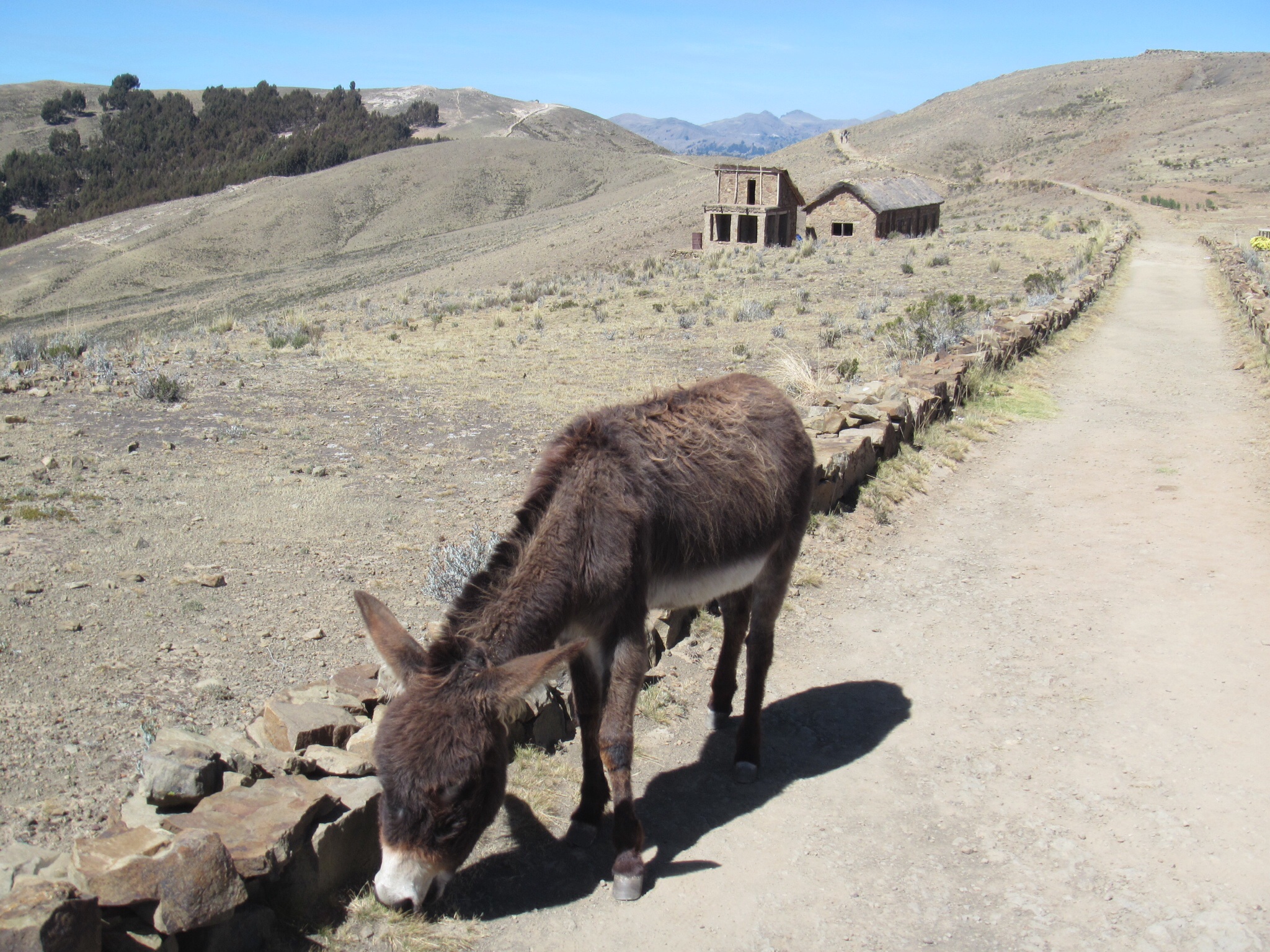 Arriving in Puno a few hours later, we got into a cab that said he knew where our hostel was, but proceeded to get lost and tried to charge us more money. I don’t think so, amigo. Our hostel was also conveniently located by a homeless shelter, making us feel fairly uncertain about the city of Puno. On top of that, we were showed to a dingy smelling room that was freezing cold, without a bathroom door. It’s a good thing Ryan and I are close. Needless to say, we went to bed with fairly negative thoughts towards Puno.
Arriving in Puno a few hours later, we got into a cab that said he knew where our hostel was, but proceeded to get lost and tried to charge us more money. I don’t think so, amigo. Our hostel was also conveniently located by a homeless shelter, making us feel fairly uncertain about the city of Puno. On top of that, we were showed to a dingy smelling room that was freezing cold, without a bathroom door. It’s a good thing Ryan and I are close. Needless to say, we went to bed with fairly negative thoughts towards Puno.
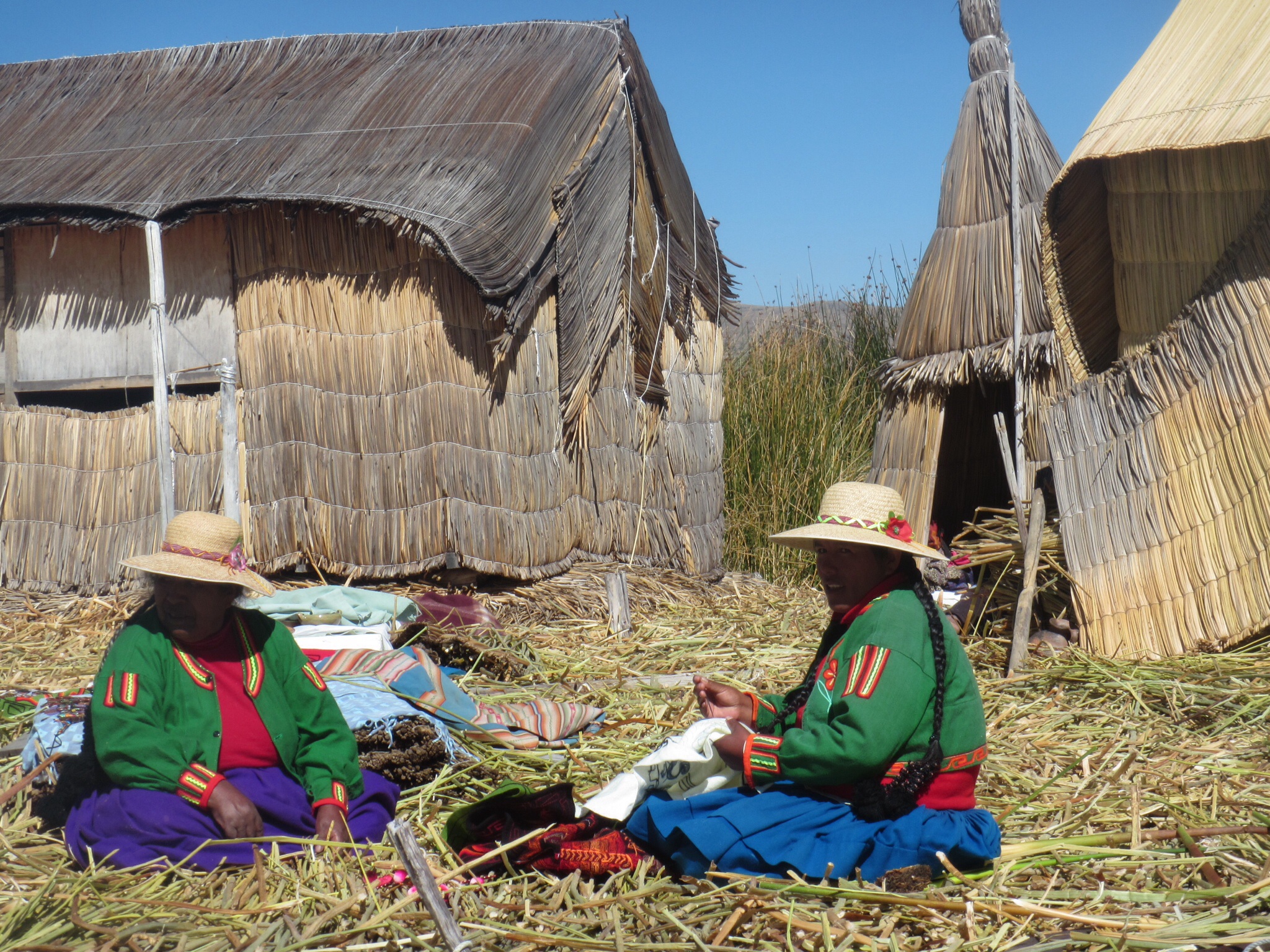 The following morning, we were picked up to do a half day tour of the floating islands of the Uros people. Anything that you read about these islands will tell you that they are touristy; however, I wasn’t prepared for exactly how touristy they would be. We set out on a boat from the harbour in Puno and within 20 minutes, we had arrived at the first of the islands. We got off onto the island, and I was shocked by how slippery and tough to walk on the reeds were. We settled down onto benches made of reeds to learn a little bit about the islands and how they are made. The islands are composed entirely of the lake reeds, which are re-layered every 15 days. The houses are also built of reeds, and in order to prevent the entire islands from burning down, all the cooking is done in ceramic dishes. The Uros people have a special island that they go to to use the bathroom, and every time the hole fills with waste, they use dead reeds and ash to help with decomposition. Nothing grows on the islands, so the Uros people trade fish with the people of Puno for quinoa, rice, potatoes and other vegetables. Finally, because the islands are floating, the Uros people anchor them down on all sides to prevent them from floating away. While on the island, we were shown the houses, the local textiles, and sang a song in Quecha (a local language). Although it felt VERY showy and commercialized, the uniqueness of this place is undeniable, and it was interesting to see the way these people live, without running water, electricity, or Internet.
The following morning, we were picked up to do a half day tour of the floating islands of the Uros people. Anything that you read about these islands will tell you that they are touristy; however, I wasn’t prepared for exactly how touristy they would be. We set out on a boat from the harbour in Puno and within 20 minutes, we had arrived at the first of the islands. We got off onto the island, and I was shocked by how slippery and tough to walk on the reeds were. We settled down onto benches made of reeds to learn a little bit about the islands and how they are made. The islands are composed entirely of the lake reeds, which are re-layered every 15 days. The houses are also built of reeds, and in order to prevent the entire islands from burning down, all the cooking is done in ceramic dishes. The Uros people have a special island that they go to to use the bathroom, and every time the hole fills with waste, they use dead reeds and ash to help with decomposition. Nothing grows on the islands, so the Uros people trade fish with the people of Puno for quinoa, rice, potatoes and other vegetables. Finally, because the islands are floating, the Uros people anchor them down on all sides to prevent them from floating away. While on the island, we were shown the houses, the local textiles, and sang a song in Quecha (a local language). Although it felt VERY showy and commercialized, the uniqueness of this place is undeniable, and it was interesting to see the way these people live, without running water, electricity, or Internet.
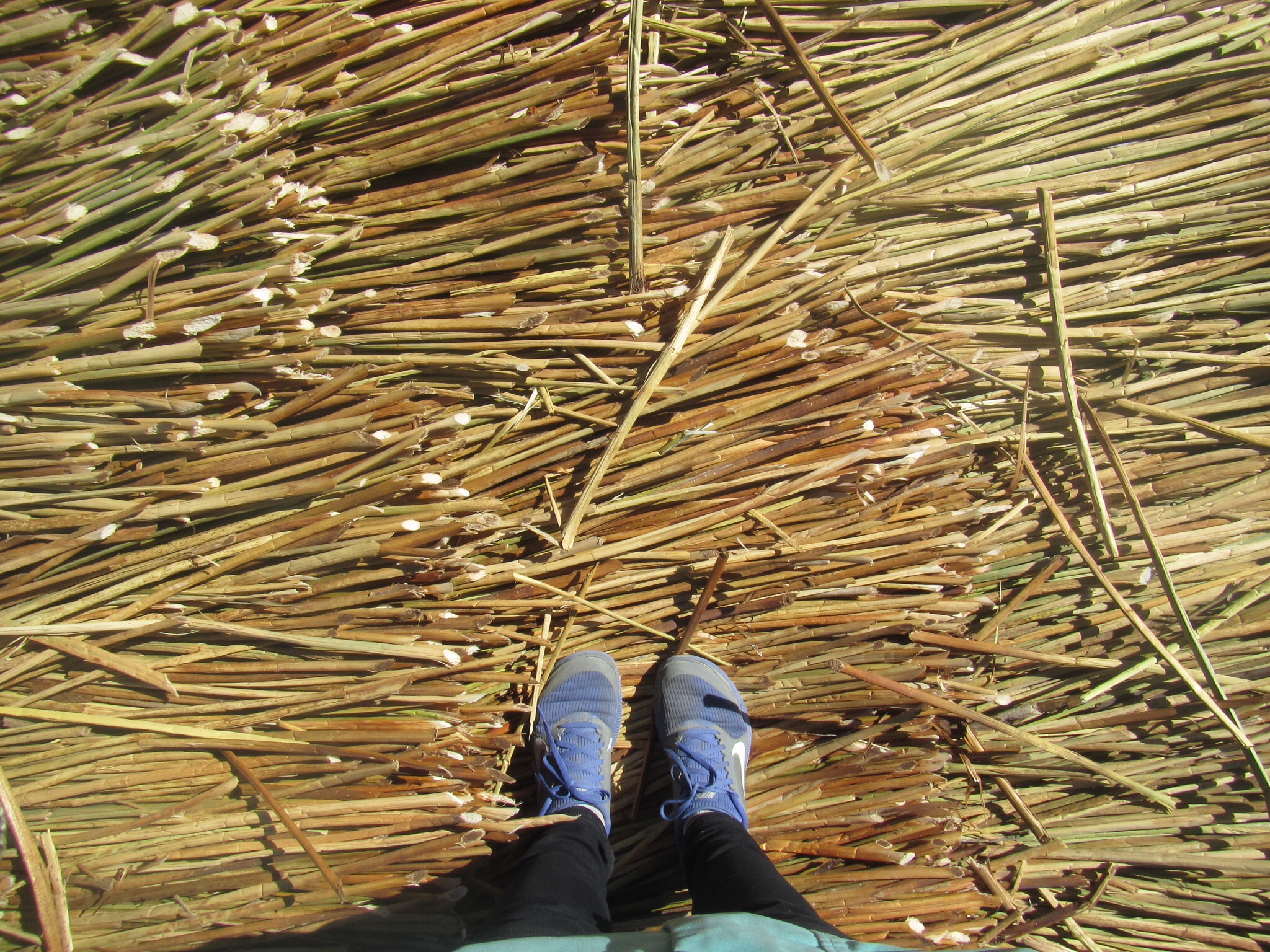 After our tour of the first island, we took a traditional boat over to a second island, where we were given the chance to take photos and buy more local textiles and similar prodcts. Looking around, we could clearly see a similar set up to our left and right, giving us the feeling that it was all set up in preparation for tourists. It is truly unfortunate that tourism has caused such commercialization in this unique place. If I was to visit again, I would love to find a local that could show us the actual city where the 2,000 Uros inhabitants live, so that we could see their actual day to day lives. Unfortunately, we were left with a sour taste in our mouthes from the whole experience.
After our tour of the first island, we took a traditional boat over to a second island, where we were given the chance to take photos and buy more local textiles and similar prodcts. Looking around, we could clearly see a similar set up to our left and right, giving us the feeling that it was all set up in preparation for tourists. It is truly unfortunate that tourism has caused such commercialization in this unique place. If I was to visit again, I would love to find a local that could show us the actual city where the 2,000 Uros inhabitants live, so that we could see their actual day to day lives. Unfortunately, we were left with a sour taste in our mouthes from the whole experience.
We returned to Puno in the early afternoon, where we searched out some food on the main pedestrian street. We spent the rest of the afternoon enjoying the good wifi at our hostel, and catching up on all that we had missed with our last few weeks of terrible wifi. We ended the evening with a large, expensive, but extremely delicious meal at La Mojsa, which is definitely worth a visit if in Puno.